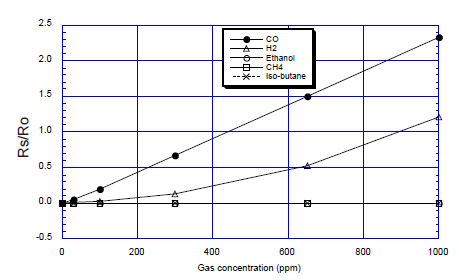The current global energy situation is becoming increasingly tense, and the development of the new energy industry has become an inevitable trend. As an emerging industry in the field of new energy, energy storage has already established energy storage power stations in some areas, which can improve the distribution network ‘s ability to accept distributed power sources , stabilize the voltage level of the end nodes of the power grid , and serve as a backup power supply in the event of grid failure or maintenance. plays a huge role. At the same time, in the power transformation and consumption link of smart grid construction, energy storage power stations also have great economic value, and their safety and stability are of great significance to the economy of the entire system.
As my country’s carbon peak and carbon neutrality goals are proposed, the proportion of new energy in primary energy consumption continues to increase, gradually replacing fossil energy. At the ninth meeting of the Central Financial and Economic Commission, General Secretary Xi Jinping emphasized the need to implement renewable energy substitution actions, deepen the reform of the power system, and build a new power system with new energy as the main body. As new energy becomes the main energy source, the stable operation of the power grid will face greater challenges. Due to its characteristics of easy site selection and flexible configuration, energy storage is an effective means to realize the consumption of renewable energy and ensure the safe and stable operation of the power grid. It has been widely used in the fields of power supply side, grid side and user side. As a new type of energy storage equipment, container-type lithium-ion battery energy storage system has the advantages of high power density and energy density, long life, high reliability and strong environmental adaptability. It can be used on the power supply side, grid side and user side. It has broad application prospects. In recent years, 100-megawatt lithium-ion battery energy storage power stations on the grid side in Jiangsu, Henan, Hunan, Qinghai and Fujian have been successively constructed and put into operation. They are playing an important role in stabilizing new energy power fluctuations, improving clean energy external transmission capabilities, grid peak shaving, and frequency modulation. and electrical ancillary services and other areas have played an important role. Large-capacity containerized lithium-ion battery energy storage systems have become a future development trend. The containerized lithium-ion battery energy storage system uses a standard container as a carrier to integrate lithium-ion batteries, battery management systems, monitoring systems, air conditioning systems, fire protection systems and power distribution systems
in containers to achieve highly integrated, large-capacity and movable energy storage devices. However, the electrolyte solvent of lithium-ion batteries has the characteristics of low flash point, high chemical activity and extremely flammable. Even if protective measures are taken into consideration in container design , it is still difficult to avoid overcharging, over-discharging, short circuit and mechanical damage to lithium batteries. The internal thermal runaway of the energy storage battery caused by sexual damage may lead to chain reactions such as explosion and combustion. When a certain group of lithium batteries undergoes thermal runaway, it will produce a strong thermal shock to the surrounding batteries, causing thermal runaway to spread. At the same time, a large amount of alkane flammable gas will be generated, which may cause serious fires or even explosions. In recent years, safety accidents in electrochemical energy storage power stations have occurred from time to time. There have been more than 30 fire accidents in energy storage power stations at home and abroad, resulting in property losses and casualties. The safety issues of lithium-ion battery energy storage systems have become an important factor restricting the rapid development of the industry, and have attracted increasing attention from all walks of life.
In recent years, some research institutions in my country have carried out basic research on energy storage battery fire protection technology and electrochemical energy storage battery thermal runaway experimental detection technology. However, existing research mainly focuses on single cells and battery module levels, and there are few relevant experimental studies on lithium-ion battery energy storage cabinets, battery clusters and energy storage systems, and relevant safety testing methods and standards have not yet been established and improved. In addition, the containerized lithium-ion battery energy storage system has a large number of battery clusters and a large number of parallel battery clusters. Once a thermal runaway fire occurs in a single lithium-ion battery, the burning temperature is high and the burning speed is fast, making it difficult to put out the fire. Lithium-ion batteries with different chemical systems have great combustion differences, producing a large amount of toxic and harmful smoke, and there may be a risk of explosion during the combustion process. When a fire occurs, it causes violent combustion, causing the entire energy storage system to catch fire or explode, which brings huge challenges to firefighting and rescue work.
Early detection and safety warning of fire in containerized lithium-ion battery energy storage system
In the early stage of battery fire, carry out effective and accurate detection and early warning, and adopt corresponding firefighting measures to prevent further spread of fire. Before the safety valve is opened, battery fault diagnosis should be done to provide early warning. When the battery safety valve is opened, a large amount of gas and smoke will be produced. For example, the volume fraction of CO can rapidly increase from 2.4×10-6 to 190×10-6.
In addition, the released gases such as CO2, CH4, volatile organic compounds (VOC), etc., increase significantly when the safety valve is opened. Therefore, relevant gas sensors can be used in conjunction with smoke sensors, fire detectors, temperature sensors , etc. , according to the thermal runaway characteristics of the power station battery, set the corresponding early warning threshold, couple a variety of characteristic parameters, when different sensor parameters reach the set threshold, an alarm is issued to achieve early detection and early warning of lithium-ion battery fire, and based on the alarm Take corresponding control measures to prevent further expansion of lithium-ion battery fires.
In addition, appropriate sensors and detectors should be selected based on range and sensitivity, and redundant systems should be set up to ensure accurate response of early detection and early warning devices of power station fires.
We can start with the large amount of gas produced when the power lithium battery is thermally runaway. When the lithium-ion battery is thermally runaway, a large amount of carbon monoxide will be released inside the battery. Carbon monoxide is not only a flammable and explosive gas, but it can also bind to hemoglobin in the human body, causing it to lose the ability to combine with oxygen, leading to hypoxia or even suffocation. Therefore, we can determine the thermal runaway of the battery by detecting the concentration of carbon monoxide. Here Gongcai.com recommends a button-type carbon monoxide sensor (CO sensor) TGS5141:
The TGS5141 carbon monoxide sensor CO sensor is a battery-driven electrochemical sensor developed by Figaro. It uses a special electrode to replace the water reservoir. Due to the removal of the water reservoir used in the TGS5042, the overall size of the TGS5141 is reduced to only 10% of the size of the latter compared to the TGS5042. It is very suitable for highly integrated electronic products. It has high sensitivity to CO, linearly outputs CO concentration, and is easy to design. It comes with a factory pre-calibrated sensitivity coefficient, which is convenient for users to use and perform performance traceability. It has a lifespan of more than 10 years.
After all, it is related to our life safety, and there are still requirements for accuracy. If the measurement is inaccurate, how can we give a correct alarm? TGS5141 output currentIt shows high linearity with a deviation within ±5% in the range of 0 to 1,000 ppm with carbon monoxide concentration. The output current corresponding to different concentrations of CO can be referred to the figure below.
At the same time, we must also pay attention to the long-term stability of the sensor, which requires the sensor life to be long enough and the sensor output to be stable for a long time. Otherwise, the alarm value will change, causing morning and evening reports or even no reports. TGS5141 has a life span of more than ten years and its long-term stability is also very good. You can refer to the figure below. (The Y-axis shows the ratio of the output current (I) in 300 ppm carbon monoxide at any point in time to the output current (Io) in 300 ppm carbon monoxide on the first day of testing.)
There will be various smells in the energy storage power station. If the sensor’s anti-interference performance is not good, it will easily cause false alarms. Therefore, the sensor needs to be highly sensitive to CO and the lower the sensitivity to other gases, the better. TGS5141 is very good, its sensitivity to most gases is very low, and its sensitivity to CO is very high, see the picture below.
And considering that the temperature range in the power station is relatively wide, and basically all sensors are significantly affected by temperature, the manufacturer has made a temperature compensation coefficient table for TGS5141. OEM customers can directly use the compensation coefficient to perform temperature compensation on the sensor. , so that the sensor can have high-precision output at different temperatures. The compensation coefficient is shown in the figure below.
productsmenu
cindy@justwellcenter.com+86 13376981664
You are here:
- Home
- Industry News
- Application of carbon monoxide sensors…






